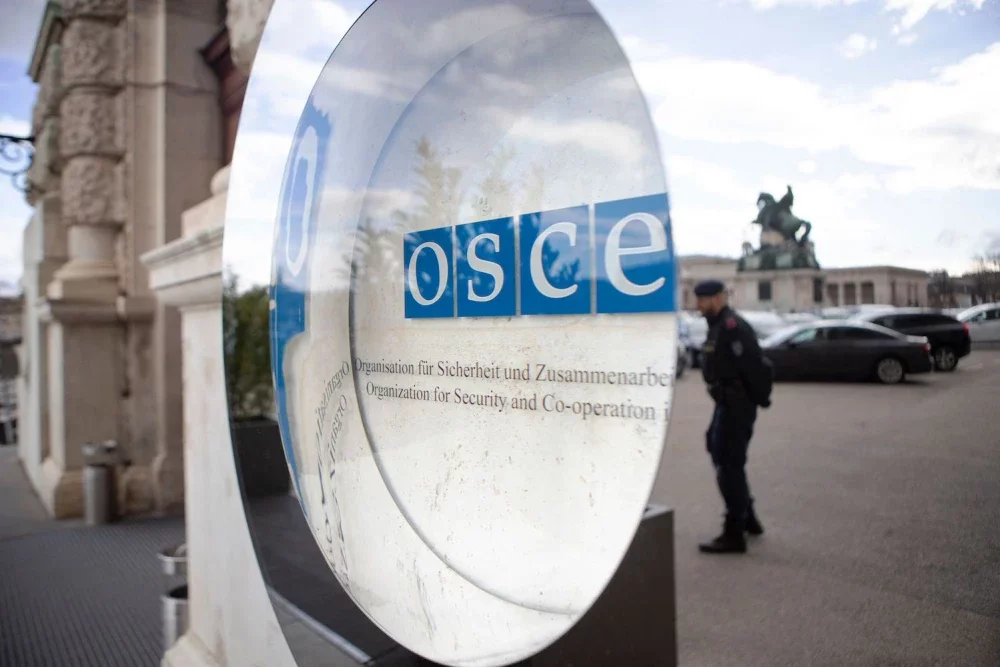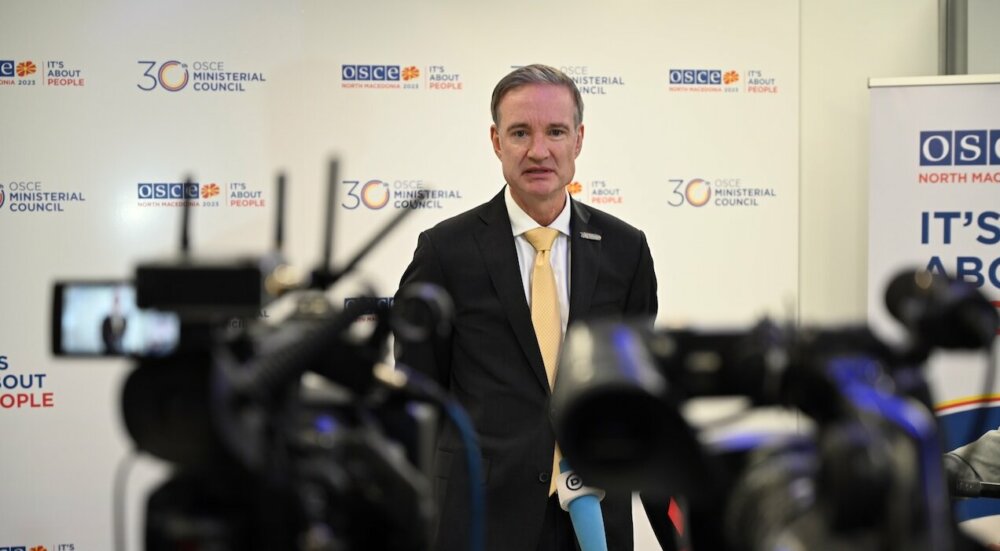Photo: OSCE

OSCE to send Special Monitoring Mission to Ukraine
On 21 March, the OSCE Permanent Council adopted a decision to deploy a Special Monitoring Mission to Ukraine. After several weeks of intense negotiations, eventually all 57 participating States – including the Russian Federation – joined consensus on the mandate of the mission. The main stumbling block during the negotiations was not the composition of the mission but the operational modalities and especially the mission’s area of deployment. The current mandate of the mission foresees “deployment throughout Ukraine”, which is somewhat ambiguous language. In fact, the mission is allowed to enter nine regions throughout Ukraine, including the volatile southern and eastern part of Ukraine but excluding the Crimean peninsula. This should be seen as a compromise solution and not as acceptance by the international community that Crimea now belongs to Russia. In fact, Ambassador Thomas Greminger, Head of the Mission of Switzerland to the OSCE, emphasized in an interview on Swiss television on 22 March that “the current mandate does not exclude deployment of the mission to Crimea at a later stage” [author’s own translation]. Fu,rthermore, the United States (US) and the European Union (EU) maintained at the recent OSCE Permanent Council meeting with the Acting Foreign Minister of Ukraine, Andrii Deshchytsia, that Russia’s annexation of Crimea is illegal and constitutes a violation of Ukraine’s sovereignty and territorial integrity, and called on Russia to withdraw its forces to “pre-crisis positions and numbers”.
The Special Monitoring Mission – which deployed an advance team the day after the agreement in the Permanent Council – will initially consist of 100 civilian monitors, including diplomats, human rights experts, minority experts and police experts deployed for an initial period of six months. The mission can be widened to up to 400 monitors and may be extended for another six months by the Permanent Council. According to the OSCE the purpose of the Special Monitoring Mission to Ukraine will be “to gather information and report on the security situation”, to “monitor the human rights situation in the country, including the rights of national minorities” and to “facilitate dialogue”.
The OSCE has considerable experience with such missions. For example, the OSCE agreed on the Kosovo Verification Mission in October 1998 to “verify compliance by all parties in Kosovo with UN Security Council Resolution 1199, and to report instances of progress and/or non-compliance […]”. This mission was considerably larger in size (approximately 1500 unarmed verifiers) and was deployed very quickly after agreement. Hence, many participating States have expert pools of candidates who can be sent on such missions on demand.
The importance of this Special Monitoring Mission to Ukraine is threefold. Firstly, since this mission has been agreed on by all relevant parties (Ukraine, Russian Federation, EU, US) it enjoys legitimacy and thus has a comparable advantage to possible missions by other international organizations, such as the EU. Secondly, through unbiased and objective reporting about alleged violations of minority rights, Moscow’s declaration to reserve its right to enter Ukrainian territory to “protect Russian-speakers” may be mitigated and the international community will be enabled to assist Ukraine adequately in ensuring minority rights. Thirdly, by maintaining contact with regional and local authorities as well as with representatives of minority groups and civil society, dialogue on the ground can be facilitated by the mission and thus the situation can be de-escalated. This de-escalation is urgently needed in order for Ukraine to stabilize and eventually create a true participatory democracy in which all sides feel equally represented.
In addition to the Special Monitoring Mission, the OSCE has used other, flexible tools to address the crisis in Ukraine, ones that do not require a consensus decision by all 57 participating States. For example, the OSCE has launched a ‘National Dialogue Project’ – financed through extra-budgetary contributions – that it has deployed within the mandate of the OSCE Project Coordinator in Ukraine (the OSCE field operation based in Kiev) and that has been approved by the Ukrainian government. This project aims at “facilitating dialogue between different parts of Ukrainian society and wants to contribute to a sustainable transition process, in particular addressing political, humanitarian and minority issues”. 15 OSCE experts are already in Ukraine to work on this project. Furthermore, participating States have answered a request by Ukraine for deployment of unarmed military and civilian personnel under Chapter III of the Vienna Document 2011 (which should not be confused with the current Special Monitoring Mission) in order to dispel concerns about unusual military activities. Under this mission, OSCE personnel made several attempts in March to enter the Crimean peninsula, but were turned back by armed men at the borders.
De-escalation, national unity and a participatory democracy is the only way forward for Ukraine. Conversely, continued geopolitical rivalry between the EU and the Russian Federation will only further destabilize and split the country. The OSCE is the only international security organization that unites Russia, the United States, the EU and Ukraine as members. It is therefore the best forum in which to address the crisis in Ukraine as well as the new dividing lines between East and West.



Comments
* Your email address will not be published